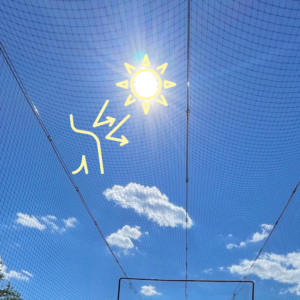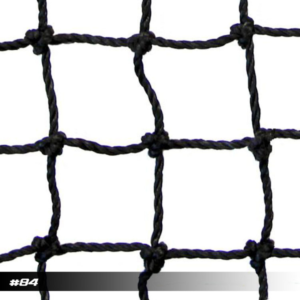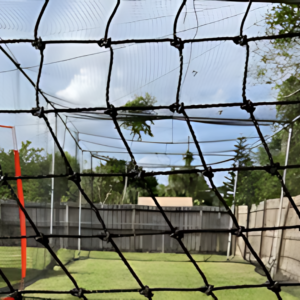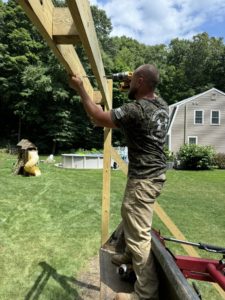🧵 5 Little-Known Secrets to Buying Great Baseball Cage Netting
Trying to find the right baseball cage netting? With dozens of options online, it’s easy to get overwhelmed — but these 5 often-overlooked tips will help you make a smart purchase that actually lasts.
When it comes to building a batting cage, the netting is the backbone of your setup. It keeps balls contained, protects players, and takes the brunt of every swing. Yet, most people focus only on size or price — and miss key details that affect long-term safety, performance, and durability.
In this guide, you’ll learn 5 key factors to consider before buying your next cage netting, whether you’re a baseball parent, coach, or backyard builder.
1. Understanding the Impact of UV Stabilization

Sun damage is one of the leading causes of net failure in outdoor cages. Over time, UV rays weaken the fibers and lead to sagging, tearing, and costly replacements. UV-stabilized netting is treated to resist sun damage and can extend the life of your net by years.
Why it matters: Without UV protection, even “durable” netting may only last a season or two. UV-resistant netting costs more up front — but saves you big over time.
Avoid this mistake: Don’t assume “heavy-duty” = UV-protected. Always check product specs before buying. Outdoor cages without UV stabilization often need early replacement.
2. The Importance of Twine Size and Type


Twine size = how thick the netting is. Popular sizes include #24, #36, and #42 — the higher the number, the thicker and more durable the netting. You’ll also choose between knotted vs. knotless designs, which affect how well the net holds together under stress.
Why it matters: For heavy use or older players, choose at least #36 twine. Thinner twine breaks down faster, especially in outdoor cages. Knotted netting is more resistant to unraveling after damage.
Avoid this mistake: Budget netting often uses #21–#24 twine. These are fine for backyard tee work — but won’t last long under live BP. Consider your use case before you buy.
3. Choosing the Right Mesh Size for Safety

Mesh size = the size of the openings in the netting. The standard for baseball is 1 3/4” mesh. Smaller mesh sizes add weight and cost. Larger mesh risks letting balls through.
Why it matters: The 1 3/4” mesh strikes the right balance between ball containment and visibility. Anything larger can let baseballs escape and create safety hazards.
Avoid this mistake: Going bigger to save money. Some budget nets use 2” mesh, which isn’t safe for live hitting. Stick with 1 3/4” or tighter.
4. The Role of Weather Resistance in Netting Durability

Outdoor cages are exposed to more than sun. Rain, wind, and temperature swings all wear down netting over time. That’s why you want netting that’s made from HDPE or weather-treated nylon — both resist water and shrinkage better than untreated materials.
Why it matters: Weather-resistant netting stays flexible and strong even in harsh conditions. This prevents cracking, shrinking, and premature failure.
Related: See our full weatherproofing guide for more outdoor cage protection tips.
5. Don’t Skip Installation and Maintenance

Even premium netting will fail if installed poorly. Make sure the net is tensioned properly, anchored evenly, and regularly inspected. Many issues arise from sagging nets, wind stress, or weak attachment points — all of which are avoidable.
Why it matters: Saggy nets = higher chance of rips and unsafe play. Clean and inspect your net monthly. Tighten corners and re-secure loose areas.
Learn more: Don’t miss our full guide on batting cage maintenance for long-term care.
🔎 Want to See Netting in Action?
Explore how real backyard cage owners are using premium netting with turf and drainage upgrades. Here are a few standouts on CageList:
- 📍 Hitters Paradise in Menifee, CA – Turf, pro netting, and nighttime lighting
- 📍 The Kapadia Estate Batting Cage — Claremont, CA – Private raised setup with pitching mound
These hosts invested in quality netting — and now earn passive income through their listings on CageList.
🎯 Conclusion: Smart Netting = Long-Term Results
When it comes to buying baseball cage netting, don’t just chase low prices — look for quality materials, proper UV and weather protection, the right twine and mesh sizes, and strong install practices.
The right netting can save you years of hassle, repairs, and wasted money. Whether you’re setting up a backyard cage or planning to list your space on CageList, investing in premium netting is one of the smartest moves you can make.
Now that you know what to look for — go build something that lasts. ⚾️
